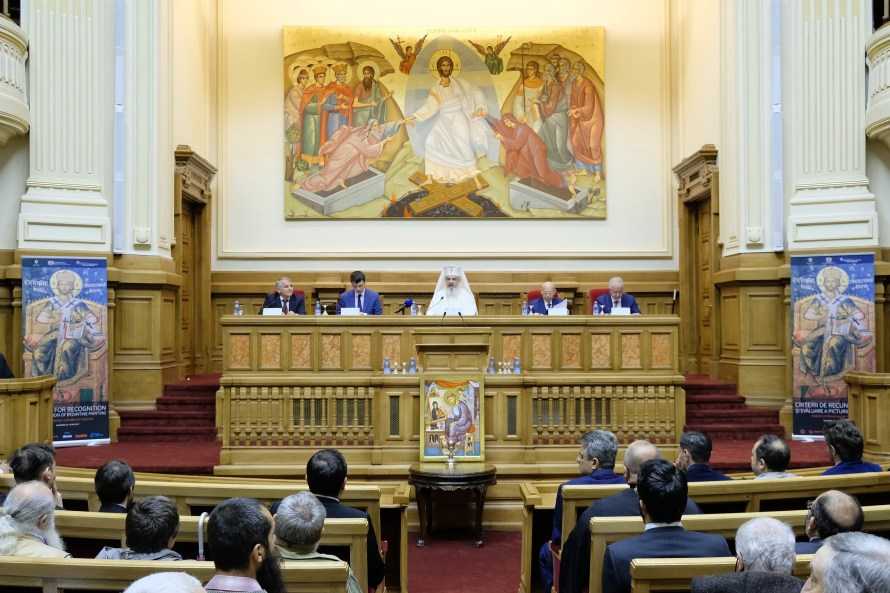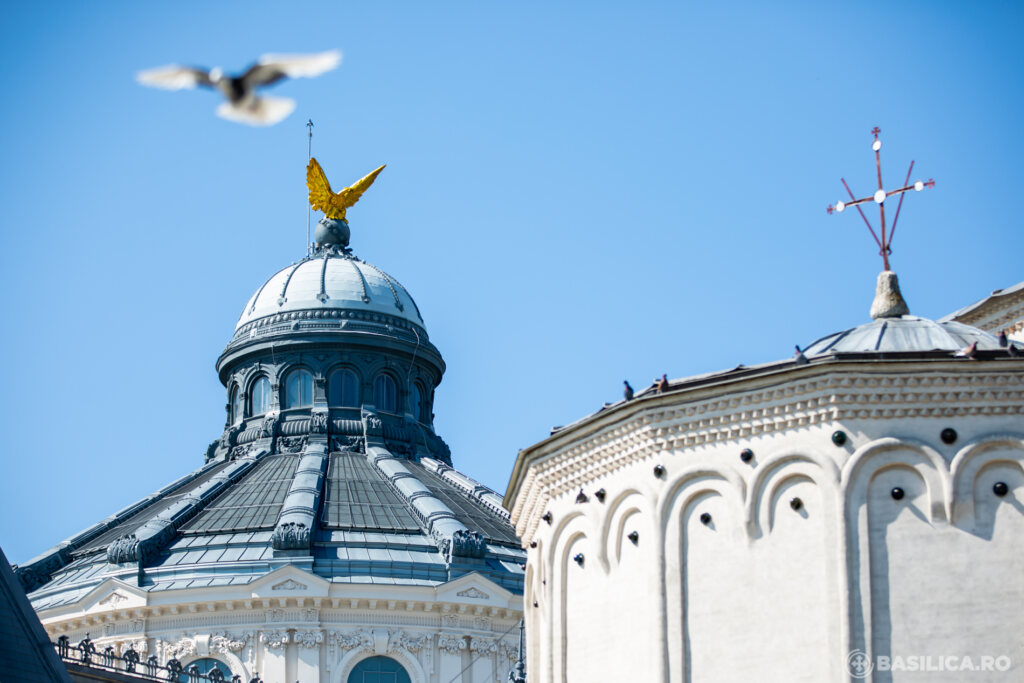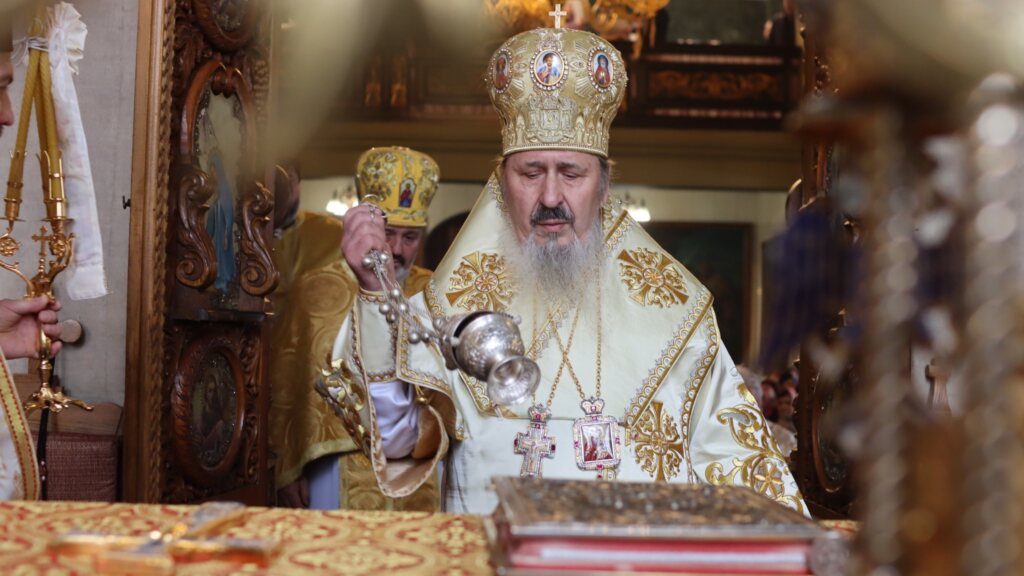Address by His Beatitude Daniel, Patriarch of the Romanian Orthodox Church, to the International Congress of Theology entitled Criteria for recognition and evaluation of Byzantine painting (icon and fresco), 20-24 May 2017, Palace of the Patriarchate, Bucharest:
The International Congress of Theology entitled Criteria for recognition and evaluation of Byzantine painting (icon and fresco), organised by the Romanian Patriarchate through its Theological-Educational Department, Culture and Religious Heritage Department, Church Painting Commission, and Patriarch Justinian Faculty of Orthodox Theology, University of Bucharest, in cooperation with the State Secretariat for Religious Affairs, represents a significant event among the manifestations occasioned by the Solemn Year of the holy icons, iconographers and church painters.
The Congress takes place between 20–24 May 2017, at the Palace of the Patriarchate in Bucharest and gathers representatives of state institutions, priests, professors, specialists in Sacred Art from Romania and abroad. In addition, to this academic event were invited church painters and restorers, who participate in the National Conference Dogmatic Unity and National Specificity in Church Painting.
The works of the Congress have been structured in the following four sub-themes:
- History of Byzantine iconography and painting (fresco): geographical area, chronology and schools of Byzantine painting.
- Theology of the Byzantine icon and fresco: liturgical and artistic expression of the ecclesial Orthodox faith.
- Rules and manuals for Byzantine painting (evolution of hermeneutics).
- Importance and need of the criteria to recognise and evaluate the Byzantine painting for current Orthodox iconography: tension between ecclesial fidelity and individual, local artistic freedom.
The Congress aims to bring to the centre of Church mission the actuality, importance and necessity of holy icons.
In this context, we recall that this year we celebrate the 1230th anniversary of the convening of the Seventh Ecumenical Council in 787, which consecrated the triumph of Orthodoxy upon those who fought the holy icons because they did not understand their dogmatic foundation. Starting from the reality of the Incarnation of God’s eternal Son, the Church has taught that visible mater is able to express an invisible, spiritual reality. By assuming the visible, human nature, the invisible Son of God has become visible and has opened the path to liturgical art or iconography. This iconography is not only decorative, pedagogical and aesthetical art, but first, it is a visual profession of the truth of faith by observing the Human Embodiment or Incarnation of the eternal Word of God. At the same time, iconography is an invitation to prayer or spiritual communion with Christ the God-Man, and with the holy persons depicted in the icons.
Orthodox iconography is liturgical, church art that is deeply theological because through images and colours it makes visible the teaching of faith of the Orthodox Church regarding the Person, life and work of our Saviour Jesus Christ, the life and work of the Mother of God, as well as the lives of the saints of God from all ages. As the Holy Scripture shows in words God’s salvific work in history, so does Orthodox iconography show through images and colours the same salvific work of God manifested in history in His saints. In this regard, only Orthodox Byzantine painting is normative for the Orthodox Church, since this painting is fully compatible with the Orthodox Divine Liturgy and the Byzantine Orthodox liturgical hymnography. In other words, in the Orthodox Church the holy writings and holy icons have the same contents of the faith in Christ, since Jesus Christ is called at the same time the Word of God (John 1:14) and the icon or the image of God (Colossians 1:15).
Therefore, Orthodox iconography is theology expressed in images and colours, and we especially understand this truth by observing the icons of liturgical feasts and by meditating on the deep meanings of the images depicted in them, i.e. the persons and events that have a connection of faith and prayer with the light of the Kingdom of the Most Holy Trinity. From this perspective, the artistry of Orthodox iconography and mural painting is not a naturalistic art that depicts nature, but the Art of the realities transfigured by the light or grace of the Kingdom of Heaven. By following these principles of Orthodox sacred, liturgical art, the iconographer or the church painter depict persons, holy places and landscapes, recognizable to have lived or been manifested in historical reality, and are depicted as having some traits characteristic to the gracious relation between human history and the Kingdom of Heaven. That is a transfigured or transparent reality oriented towards a new way of existence, namely an eternal, paschal existence, the existence of the soul and body in the light of Christ’s Resurrection that fills heaven and earth, and the nethermost regions, as we read in the Paschal Service on Easter Night. This light is the ultimate purpose of creation and the glory of holiness.
Because for Orthodoxy iconography and church painting represent a particularly ecclesiastical art, the Church, through the work of the painters appointed or acknowledged by it, expresses itself as a confessing Church in every icon and church painting provided they reflect with fidelity the Orthodox faith and are in accordance with the living tradition of the icons of the intercessory saints, whose life is described in the Synaxaria of the Church and in its liturgical books. This way is affirmed constantly the liturgical, confessing, doxological, educational and aesthetical vocation of icons and of church painting.
Therefore, iconography and church painting are the visual garment of the liturgical space, are part of liturgical life, while those icons from outside the places of worship, that is in homes, schools or other institutions, extend Christ’s gracious presence from the Church to the world and establish a mystical relation between “the House of the Lord” and human’s home. Each icon, regardless of its subject, makes visible the mystery of the humble and glorified love of Christ, “the Only One Holy”, the crucified and risen Lord, Who ascended in glory. That is why iconographers and fresco painters must be persons able to convey, through their spiritual and artistic work, this very mystery of Christ’s light, peace and paschal joy. Church painters are not only artists or craftsmen, who master some artistic techniques and are endowed with more or less talent. They are more than simple illustrators of some history, events or lives of Saints; they are preachers of the light, peace and joy of the glory of the Kingdom of Heaven that was revealed in the presence of the disciples Peter, James and John on Mount Tabor, at the Transfiguration of our Lord Jesus Christ, glory that represents the definitive future of the sanctified human and of the renewed Universe (acc. Book of Revelation 21). For this reason, the Church responsibly takes care of the formation, promotion and authorization of iconographers and church painters as missionaries of true faith and everlasting beauty.
In the current context in which icons and religious symbols are challenged, trying to eliminate them from the public space, it is necessary to explain and to deepen the significance of holy icons in the life and mission of the Church. In this regard, the Romanian Patriarchate attaches great importance to religious heritage in general and to church painting in particular. The painting of many churches and monasteries has been restored or is currently undergoing restoration. Furthermore, numerous museums of church art have been established within the monastic communities.
At the same time, a special veneration is brought to holy icons and future church painters and restorers are formed through religious education in public schools, in theological seminaries, where courses for Cultural heritage exist, and in faculties of Orthodox theology with a specialization in Sacred Arts.
Many projects dedicated to Sacred Art are carried out in 2017, including: the sixth edition of the National Contest Orthodox Icon – the light of faith, and the National Creative Contest The icon and the school of confession, whose winners have been awarded and appreciated on the patronal feast of the Patriarchal Cathedral, the feast day of the Holy Equal- to-the-Apostles and Great Emperors Constantine and Helen, his mother.
New generations of skilled iconographers and church painters are formed constantly in the Romanian Orthodox Church. They are capable to receive the spiritual and artistic light from great painters validated over time, to respect the hermeneutics of church painting, yet, to resume afresh and to deepen the ancient iconographic themes, because the living tradition of the Church is not a simple stereotypical repetition, but fidelity always renewed through theological, spiritual and artistic deepening. In order to come to know these painters, the Church offers them the opportunity to manifest their inspiration within these contests, but also in several national conferences, international congresses, symposia, meetings, workshops, and painting sites that are open all over the country.
Through all these educational programs and projects, we aim to contribute to the knowledge and deepening of the theology of the icon and to the progress of artistic quality, by identifying practical, authentic and viable solutions.
We congratulate the organizers and bless all the participants, hoping that this congress will be an opportunity to raise awareness of the mission of the Orthodox Church to form spiritually the young generation in the light of Christ’s eternal love and in the pursuit of the glory and the imperishable beauty of the heavenly Kingdom of the Most Holy Trinity. Thus, we can reaffirm the importance of venerating holy icons as means of confessing the Orthodox faith in the Incarnation of the Son of God and of spiritual growth through prayer in the communion of Saints.
† DANIEL
Patriarch of the Romanian Orthodox Church
Tr by Aurelian-Nicolae Iftimiu






